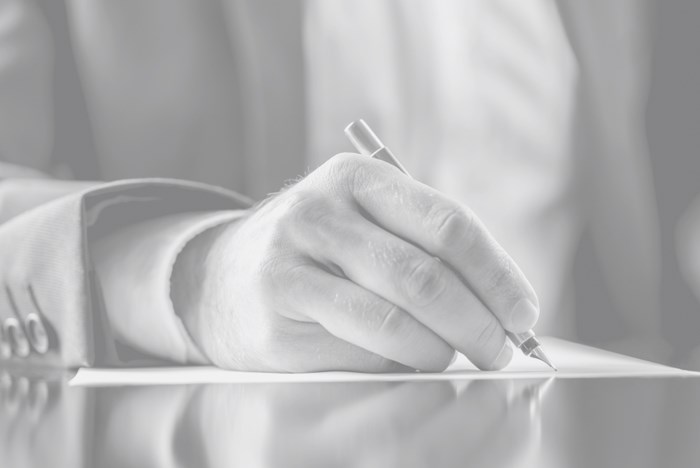InService Insights: Eyelid Surgery

The eyes are an important part of facial aesthetics and function. The popularity of blepharoplasty, as well as of possible functional implications, make them a frequently tested topic on the In-Service Exam.
Anatomy
The anterior lamella of the eyelid consists of the thin skin and orbicularis oculi muscles. The orbicularis is innervated by the zygomatic branch laterally and the buccal branch medially of CN VII. The posterior lamella consists of tarsus, conjunctiva and orbital fat pads. In the upper eyelid, the retro-orbicularis oculi fat (ROOF) sits deep to the orbital septum and is contained in a medial and middle compartment separated by the superior oblique muscle. The lacrimal gland sits within the lateral fat compartment and can be at risk for injury during fat excision. The lower eyelid sub-orbicularis oculi fat (SOOF) sits in a lateral, central and medial compartment. The medial and central fat pads are divided by the inferior oblique muscle.
Blepharoptosis
While most patients seeking periorbital rejuvenation will have dermatochalasis (excess eyelid skin), all patients should be evaluated for brow ptosis and blepharoptosis. Brow ptosis can be distinguished from blepharoptosis by manually elevating the brow to its normal position. If the eyelid remains ptotic, then the patient has true blepharoptosis. It's also important to evaluate for fat herniation versus festoons. Fat herniation will enlarge with gentle pressure on the globe. In addition to visual field assessment, several important tests should be performed during your initial evaluation:
Margin-reflect distance (MRD): Distance from corneal light reflex to upper-lid margin (MRD-1) or lower-lid margin (MRD-2). MRD-1 less than 3mm indicates blepharoptosis. A difference between MRD-1 and MRD-2 of greater than 10mm also indicates blepharoptosis.
Schirmer's test I: A filter paper strip is placed on lateral sclera. More than 10mm of wetting after five minutes indicates normal tear production. This is important, as transient dry eyes are a common complaint after blepharoplasty. Patients with any cornea procedure should wait six months before blepharoplasty due to decreased blink reflex from cornea insensitivity.
Hering's test: Since the levator muscle is bilaterally innervated centrally, unilateral ptosis causes bilateral eyelid retraction. This can result in blepharoptosis of the opposite side postoperatively. To assess for this preoperatively, either immobilize the brow in forward gaze and manually lift the affected eyelid, or use phenylephrine drops in the ptotic eye to stimulate the Muller's muscle. If the contralateral eye has a masked ptosis, it will be demonstrated by this exam.
Snap-back test: This is an assessment of lower-eyelid laxity. Distract the eyelid from the globe and release. It should return to normal position in less than two seconds without the patient blinking.
Blepharoptosis occurs when the levator aponeurosis is either detached from its insertion or incorrectly attached congenitally, causing a higher-than-normal tarsal crease. The levator aponeurosis originates from the lesser wing of the sphenoid bone and inserts within the orbicularis oculi, dermis and tarsus plate of the upper eyelid. The Muller's muscle, which is under sympathetic control, sits deep to the posterior lamella of the levator muscle and inserts into the superior border of the tarsus. Both muscles work in harmony to provide elevation of the upper eyelid.
On the other hand, pseudoptosis is when an extrinsic condition causes the lid to be ptotic, such as a globe deformity in Grave's disease. True ptosis is most often an acquired deformity that's caused by either aging (senile ptosis is most common), trauma, neurogenic disease (myasthenia gravis) and/or mechanical defects (brow ptosis or tumors). Less common are congenital conditions which are accompanied by lagophthalmos during downward gaze, due to levator fibrosis overtime.
The goal of ptosis repair is to reattach the levator back onto the tarsal plate. The surgical technique usually depends on the extent of levator dysfunction. If levator function remains at more than 10mm, then aponeurotic repair is sufficient. With 5-10mm of function, levator resection and advancement is required. If levator function is less than 5mm, then a frontalis suspension would be required. In general, 4mm of advancement is needed for every 1mm of ptosis correction.
The surgery is done under sparing use of local anesthesia to prevent distortion of dissection planes and impairment of levator function during surgery. The epinephrine in the local anesthesia may stimulate the Muller's (superior tarsal) muscle and temporarily accentuate lid elevation (lagopthalmos). A similar complication can be seen when botulium toxin for corrugators rhytids is injected too close to the superior orbital rims.
Blepharoplasty
The amount of tissue to be excised during blepharoplasty is determined preoperatively. In the upper blepharoplasty, the lower line is marked 9-11mm above the lash line, while the upper line is determined by the desired amount of redundant tissue to be removed. The area of excision should be canted upward laterally to allow the closure to lie within a rhytid. The pinch test is utilized so patients can maintain adequate postoperative eye closure.
Conservative resection of SOOF is carefully done to avoid injury to the superior oblique muscle which runs between the middle and medial fat compartments. The objective of the lower blepharoplasty is to restore youthful appearance by skin tightening and elevating the lateral canthus. Either a skin or skin-muscle flap is elevated through a subcillary or subtarsal incision, and dissection is taken inferiorly onto the bony orbit in a pre-septal plane. The lateral skin, fat and portions of tarsal plate can be excised and subsequently suspended to the lower canthal tendon or orbital rim. This will improve lower-lid laxity and tighten the lid skin. Orbital fat excision should be cautiously done between the central and medial fat pad, to avoid injury to the inferior oblique muscle as well as a hollowing appearance of the eyelids. |
Dr. Hua is PGY-6 at Houston Methodist Hospital.